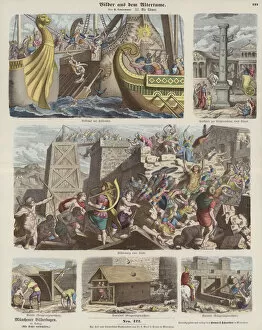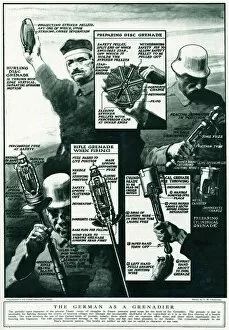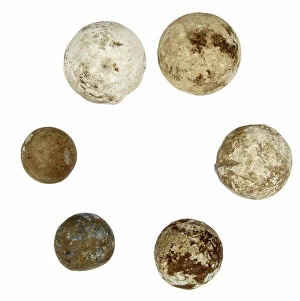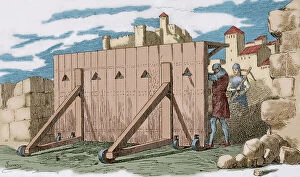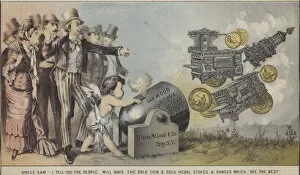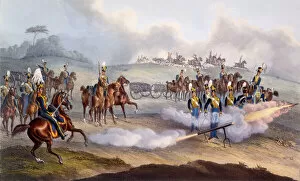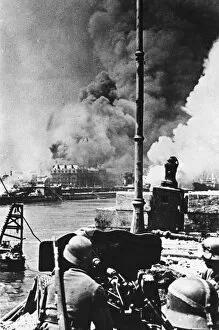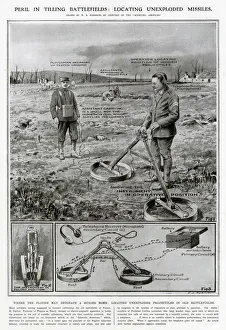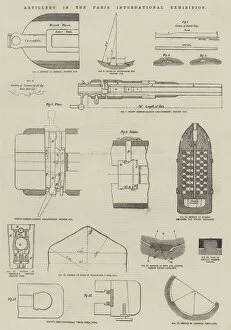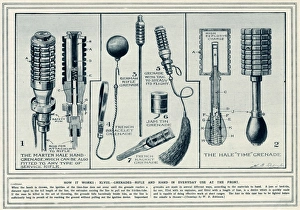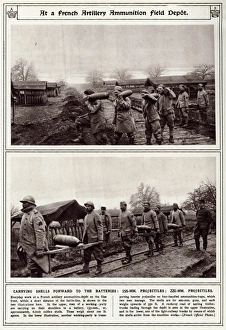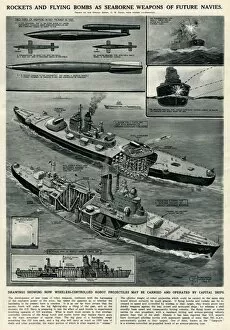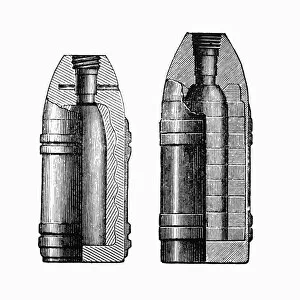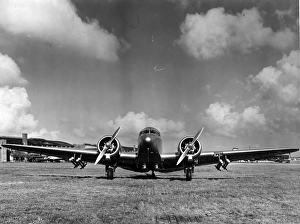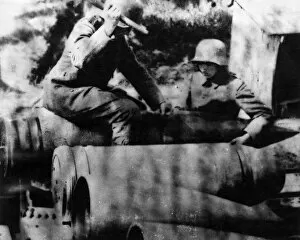Projectiles Collection
"Unleashing the Power: A Historical Journey through Projectiles" Step back in time as we explore the fascinating world of projectiles
All Professionally Made to Order for Quick Shipping
"Unleashing the Power: A Historical Journey through Projectiles" Step back in time as we explore the fascinating world of projectiles, from ancient civilizations to modern warfare. Witness the might of Roman warriors depicted in a vivid coloured engraving, showcasing their advanced weaponry and tactical prowess. Travel to 1918 Germany, where a grenadier stands tall amidst chaos, embodying the resilience and strength of soldiers during World War I. Intrigue yourself with an engraving from the Middle Ages, revealing a wood mantlet on wheels - a formidable defense mechanism that protected armies during intense battles. Fast forward to the modern age and marvel at imperial artillery showcased in Bologna Procession's grandeur. Witness how technology has evolved over centuries. Discover medieval war machines like catapults and parabolic motion devices that revolutionized warfare tactics with their precision and power. Explore engravings capturing historical weapons such as ballistas and onagers displayed at Museo Militar, later brought to life through vibrant coloration techniques. Delve into World War I history by examining various types of grenades used during this tumultuous period - each one representing innovation born out of necessity. Behold the sheer force behind large mounted crossbows that dominated battlefields throughout different eras - symbols of both fearlessness and strategic brilliance. Marvel at gold coin and gold medal stoves depicted in chromolitho prints; these intricate designs showcase artistry combined with functionality for military purposes. Immerse yourself in British Royal Horse Artillery's Rocket Troop lithograph from 1835, offering a glimpse into early rocketry experimentation within military ranks. Finally, witness Roman siege catapults brought to life through captivating coloured engravings - testaments to engineering genius employed by ancient civilizations. From antiquity to contemporary times, they have shaped our understanding of warfare dynamics. Join us on this historical journey where power meets ingenuity.

